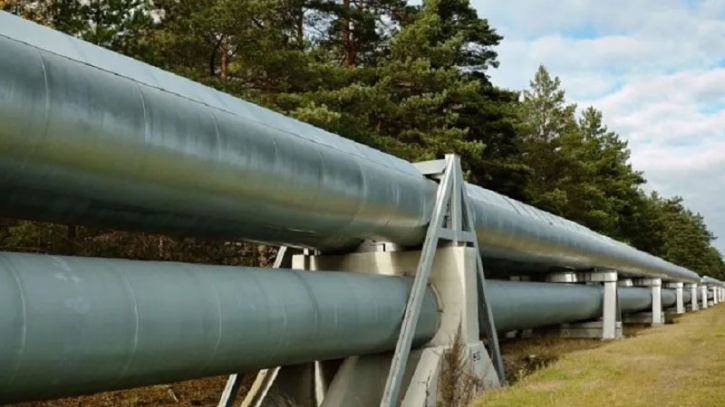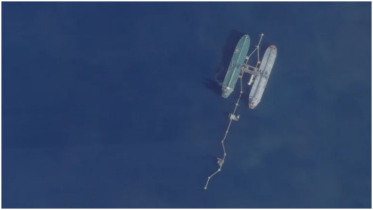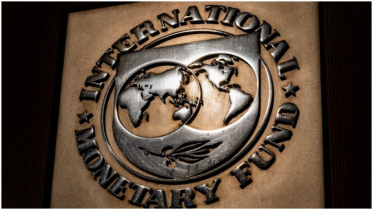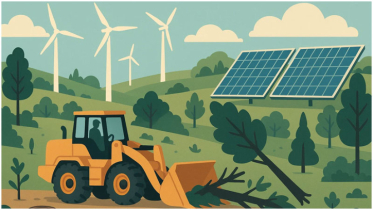Cross-border energy pipeline to bolster Bangladesh-India ties

India and Bangladesh have a long history of cooperation in various sectors, including energy. Over the years, both countries have recognized the importance of energy cooperation for economic and social development. In the next few years, India and Bangladesh are expected to deepen their energy cooperation.
In the face of global energy market volatility, the Bangladesh government is moving to import re-gasified liquefied natural gas (RLNG) from India via a cross-border pipeline as part of a larger contingency plan for safe fuel supplies. An initial bid would bring in roughly 300 million cubic feet per day (mmcfd) from India's H-Energy by 2025. This will be a second cross-country pipeline providing energy between India and Bangladesh. Since its inception on March 18, last year, the first one has been transporting diesel from India.
India-Bangladesh Friendship pipeline, also known as the Maitree pipeline, is an essential infrastructure project that strengthens the bilateral ties between India and Bangladesh. Bangladesh-India friendship pipeline for carrying diesel oil was jointly opened through video conference by the Prime Minister of Bangladesh, Sheikh Hasina and the Prime Minister of India, Narendra Modi on March 18, 2023. This pipeline, built to transport petroleum products from India to Bangladesh, is not only a testament to the growing strategic relationship between the two countries but also a symbol of their commitment to regional connectivity and energy security. neighboring nations.
The significance of the India-Bangladesh Friendship pipeline lies in its potential to enhance energy security and reduce dependency on volatile global markets for oil and gas. By establishing a direct link between India's Siliguri terminal and Bangladesh's Parbatipur depot, the pipeline offers a cost-effective and reliable means of transporting petroleum products. This strategic investment in the energy sector aligns with both countries' long-term goals of achieving sustainable development and ensuring uninterrupted access to energy resources.
The successful completion of this pipeline project demonstrates the high level of comprehension exhibited by both India and Bangladesh. Not only does this infrastructure development aid in meeting the energy demands of Bangladesh, but it also showcases the strides made by both countries in fostering regional cooperation.
After completing a 275-kilometer cross-border pipeline from Kanai Chatta in East Midnapore district to Shrirampur in Khulna, India's H-Energy, a subsidiary of Hiranandani Group, planned to transport RLNG from Digha in West Bengal to Khulna in Bangladesh. Petrobangla, the state energy corporation, signed a memorandum of understanding (MoU) with Hiranandani Energy (H-Energy) in 2021 with this goal in mind. Prior to the H-Energy agreement, India's state-owned Indian Oil Corporation Ltd (IOCL) signed an MoU with Bangladesh to provide RLNG.The initial goal is to import RLNG equivalent to about 1.0 million tonnes per annum (MTPA) from H-Energy via this pipeline for 22 years to fuel the 800MW Rupsha combined-cycle power plant controlled by the state-owned North West Power Generation Company Ltd (NWPGCL).The imported fuel would be used mostly by the under-construction 800MW facility at Rupsha in Khulna. To generate energy, the plant will require approximately 130mmcfd RLNG.The remainder of the natural gas might be fed into the national grid.The Asian Development Bank (ADB) has agreed to finance US$ 600 million and the Islamic Development Bank (IDB) roughly $200 million to build the Rupsha power plant, which will have two 400MW gas-fired units. The remaining $ 150 million will be provided by the Bangladesh government. Petrobangla would also receive an additional 200mmcfd of gas by then from private company Dipon Gas, which plans to import approximately 500 mmcfd of RLNG from India. The remaining 300mmcfd would be sold to individual consumers.The pipelines represent a joint effort to exploit shared resources effectively and promote economic integration in the region. Furthermore, its construction also reflects the understanding between India and Bangladesh in identifying and addressing common challenges, such as the need for energy diversification and reducing environmental impact.
The pipelines not only strengthen the energy security of Bangladesh but also reinforces the long-standing friendship between the two nations. It is through such initiatives that India and Bangladesh can continue to forge ahead, catalyzing regional growth and fostering economic and political stability.Despite the progress made in energy cooperation between India and Bangladesh, several challenges remain. One of the main challenges is political and bureaucratic hurdles, which can delay the implementation of energy projects.
Writer: Samara Ashrat, PhD fellow, International Relations, University of Bucharest.
Source: Daily Observer
.png)




